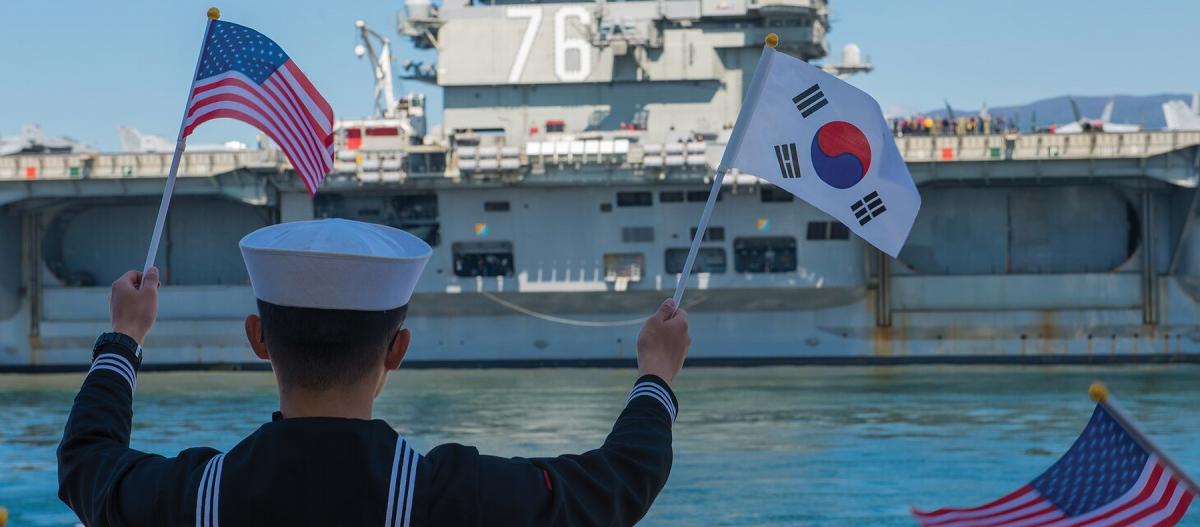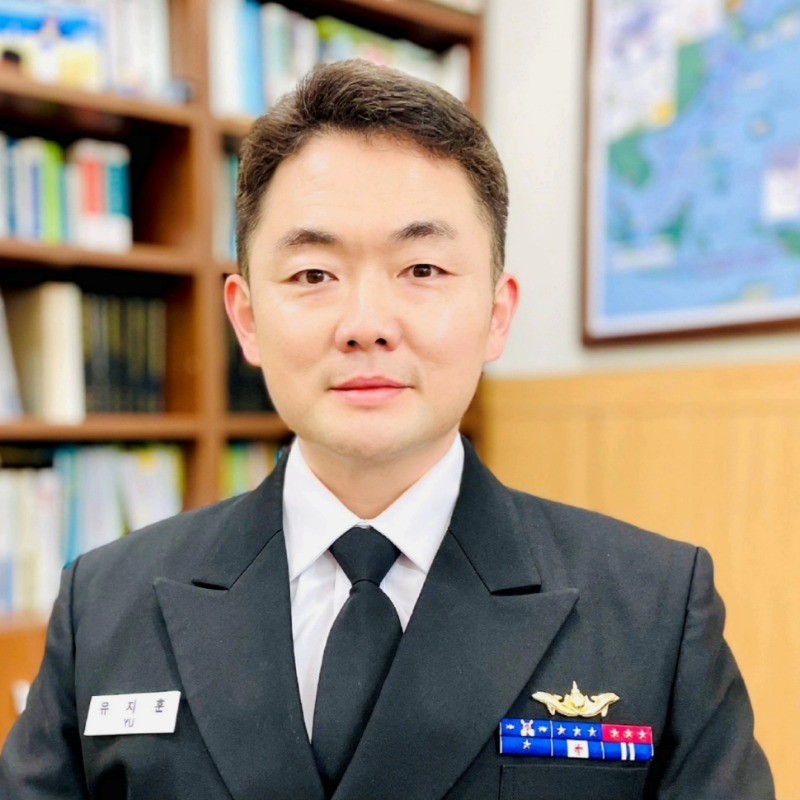The Republic of Korea (ROK) and the United States share a robust military alliance that plays a pivotal role in ensuring security and stability in East Asia. This partnership, rooted in decades of shared strategic interests, continues to evolve in response to emerging threats and shifting geopolitical dynamics. With Donald Trump’s reelection, the alliance faces new opportunities and challenges, as both nations seek ways to deepen their military collaboration. One promising avenue for such enhancement is naval Maintenance, Repair, and Overhaul (MRO) cooperation. Given the growing importance of maritime power in the Indo-Pacific region, closer collaboration in this domain has the potential to strengthen deterrence, bolster operational readiness, and reinforce the strategic depth of the ROK-US alliance.
The deployment of U.S. naval assets to South Korea for MRO purposes offers strategic advantages that extend well beyond routine maintenance and repair. The presence of U.S. naval vessels, particularly high-value assets such as aircraft carriers and submarines, serves as a visible demonstration of military power projection. This visible display of force acts as a strong deterrent to adversaries, including North Korea, which closely monitors U.S. military activities in the region. The presence of such assets signals to both North Korea and other regional actors, such as China, that the ROK-US alliance remains not only active but also prepared to respond decisively to any aggression. This implicit deterrence plays a critical role in stabilizing the security environment in East Asia by reducing the likelihood of provocations or conflicts, as adversaries are forced to consider the risks of engaging an alliance with such visible military capabilities.
For South Korea, hosting U.S. naval assets for MRO activities enhances its strategic significance within the alliance and underscores its importance as a regional security hub. The collaboration allows South Korea to showcase its advanced industrial capabilities, including its shipbuilding and maritime expertise, while simultaneously reinforcing its position as a key ally in the Indo-Pacific. The presence of U.S. naval forces in South Korea also reassures the South Korean public and regional allies of the United States’ commitment to their defense, thereby strengthening the alliance’s overall credibility and deterrent posture.
From the United States’ perspective, establishing forward MRO capabilities in South Korea presents multiple operational and strategic benefits. One of the primary advantages is the ability to sustain naval operations without the logistical burden of relying solely on domestic facilities or bases located farther away, such as those in Guam or Hawaii. By having a reliable repair and maintenance hub in South Korea, the U.S. Navy can significantly reduce downtime for its fleets, ensuring that its vessels remain combat-ready and available for deployment at all times. This forward-deployed infrastructure enables the United States to maintain a constant state of readiness in the Indo-Pacific, a region where competition with China is intensifying, and the threat of North Korean provocations remains ever-present. A permanent or semi-permanent MRO presence in South Korea also supports broader U.S. strategic objectives, such as reinforcing its influence in critical maritime theaters, protecting vital sea lanes, and ensuring the ability to respond rapidly to regional contingencies.
Deeper MRO cooperation also aligns with Donald Trump’s emphasis on burden-sharing and deriving mutual economic benefits from alliances. Joint efforts in MRO can lead to cost savings for both nations by pooling resources, streamlining logistics, and optimizing infrastructure use. Furthermore, such collaboration fosters industrial integration between Korean and U.S. defense sectors, creating opportunities for technological exchange and innovation. South Korean firms, which are renowned for their shipbuilding expertise, can partner with U.S. defense contractors to enhance MRO capabilities and develop advanced maintenance techniques. Integrating these efforts into joint military exercises further strengthens interoperability between the ROK and U.S. navies, ensuring that they can operate seamlessly together in times of crisis or conflict. Establishing forward-deployed MRO capabilities also mitigates risks posed by potential disruptions to global supply chains, which are increasingly vulnerable in contested environments.
Despite these significant advantages, several challenges must be addressed to fully realize the potential of ROK-US naval MRO cooperation. Donald Trump’s history of demanding greater financial contributions from allies could complicate negotiations, particularly if the establishment of MRO infrastructure requires significant investments from South Korea. Balancing financial responsibilities in a manner that satisfies both parties will be crucial to moving forward with these plans. Additionally, sharing advanced maintenance technologies and expertise, particularly for sensitive U.S. naval systems, may raise concerns about intellectual property rights and security. Safeguarding these technologies while promoting collaboration will require careful planning and transparency.
Geopolitical considerations also present a challenge. China is likely to view deeper military integration between the ROK and the U.S. as a threat to its strategic interests and may respond with diplomatic or economic pressure on South Korea. Balancing the benefits of hosting U.S. naval assets with the potential repercussions of antagonizing China will be a delicate task for South Korean policymakers. Nevertheless, the strategic advantages of closer naval MRO cooperation outweigh these challenges, especially given the pressing need to maintain a credible and ready deterrent in the Indo-Pacific.
Ultimately, ROK-US naval MRO cooperation offers a pathway to enhance the alliance’s operational efficiency, strategic capabilities, and economic collaboration. Beyond the practical benefits of reduced downtime and cost savings, the deployment of U.S. naval assets to South Korea enhances deterrence, projects power, and underscores the enduring strength of the alliance. For South Korea, hosting these forward-deployed capabilities cements its role as a linchpin of regional security and a key partner in maintaining stability.
As the ROK-US alliance adapts to the evolving security environment under Trump’s leadership, prioritizing naval MRO cooperation represents a clear opportunity to strengthen the partnership. By addressing operational needs, fostering industrial collaboration, and advancing technology through joint efforts, both nations can reinforce their shared commitment to peace and stability in the Indo-Pacific. In an era of heightened regional competition, the stakes for ensuring a resilient and unified alliance have never been higher, and naval MRO cooperation stands out as a critical component of this effort.

Table of Contents
ToggleJihoon Yu
Jihoon Yu is the director of external cooperation and associate research fellow at the Korea Institute for Defense Analyses. Jihoon was the member of Task Force for South Korea’s light aircraft carrier project and Jangbogo-III submarine project. He is the main author of the ROK Navy’s Navy Vision 2045. His area of expertise includes the ROK-U.S. alliance, the ROK-Europe security cooperation, inter-Korean relations, national security, maritime security, hybrid-threats, and strategic weapons systems. He earned his MA in National Security Affairs from the U.S. Naval Postgraduate School and Ph.D. in Political Science from Syracuse University.













